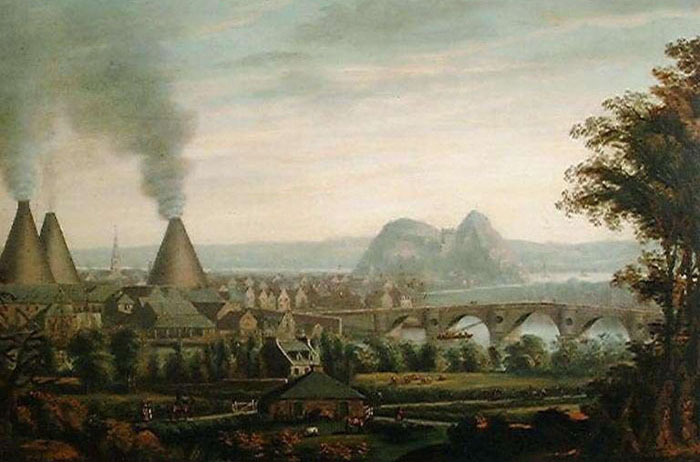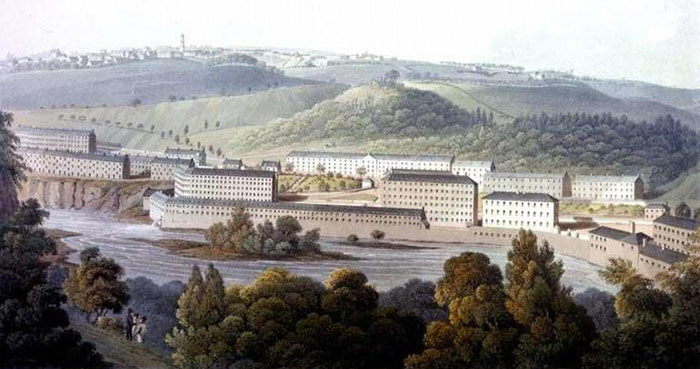The eighteenth century saw the growth of some traditional industries such as the production of wool and linen cloth, and the extraction and processing of coal, iron, and salt. It also saw the introduction of new industries such as cotton spinning. Regional specialisation gradually emerged, with the woollen industry in Aberdeenshire and the Borders, and linen mainly in Angus, Fife and Perthshire. Other regional specialities included cotton and silk at Paisley, carpets at Jedburgh, Kilmarnock, Sanquhar, and Stirling, and glass at Alloa and Dumbarton. Industries which developed in many places during the eighteenth century were breweries, distilleries, brick and tile works, paper mills and tanneries.

Painting by Alexander Brown
(b.1792), of a view of Dumbarton, including the glassworks, c.1820.
© SCRAN/West Dunbartonshire Council
Some industrial towns were long-standing
centres of production, such as Kirkcaldy, which introduced many technological
developments in the linen industry, and produced specialised types of
linen including sailcloth, and later floorcloth. But the century also
saw some villages grow quickly into industrial towns, and some completely
new industrial centres established, such as the Carron ironworks, with
its satellite villages. With increasing mechanisation, larger industrial
units, called ‘manufactories’, were sited where there was
good water power, such as New Lanark on the Clyde, or Stanley on the Tay.
Later, when steam machinery was introduced, some manufactories moved to
larger centres of population, where there was a larger available workforce.

Aquatint of New Lanark by
John Clark, 1825.
© SCRAN/Mitchell Library/RCAHMS